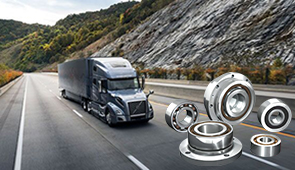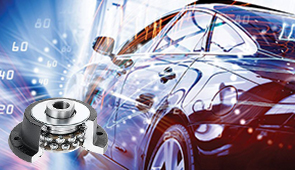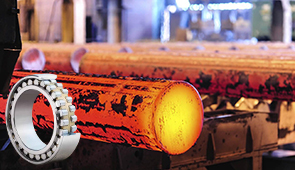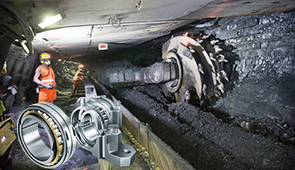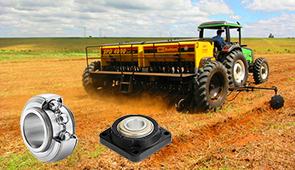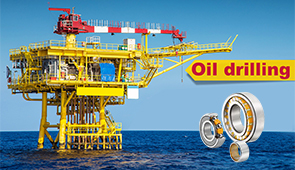The Ultimate Guide to Slewing Ring Bearings: Everything You Need to Know
Slewing ring bearings are critical components in a wide range of heavy-duty machinery and equipment, enabling smooth rotational movement under demanding loads. Whether you work in construction, renewable energy, or industrial manufacturing, understanding these versatile bearings is essential for optimizing performance, ensuring safety, and extending machinery lifespan. This guide is designed to demystify slewing ring bearings by covering key topics such as their design, functionality, applications, and maintenance best practices. By the end of this article, you’ll gain a comprehensive understanding of how these precision-engineered components work, why they matter, and how to choose the right one for your specific needs.
What Are Ring Bearings and How Do They Work?
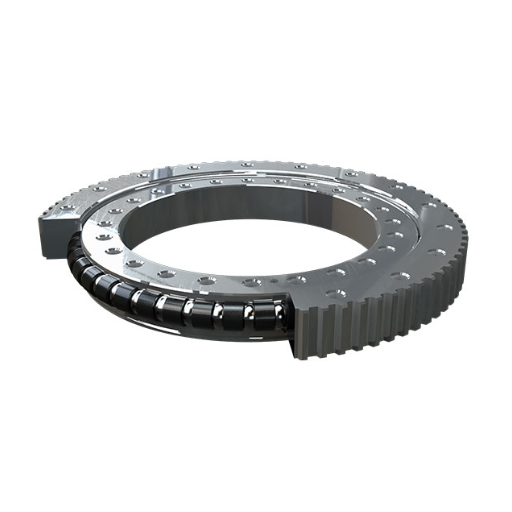
Understanding the Basics of Slewing Ring Bearings
Slewing ring bearings are sophisticated mechanical systems capable of supporting axial, radial, and moment loads—either independently or simultaneously. Typically, these bearings are made of an inner and outer ring with balls or cylindrical rollers that enable rotating movements even under heavy load stress. Unlike traditional bearing types, these bearings are specialized for applications needing both rotational movement and massive load support, which is enabled because of their unique design.
The core functionality of slewing ring bearings includes supporting a highly accurate rotation about a particular axis. To enable a mechanical drive, these bearings are drilled with teeth on the periphery of either of the races. As with other types of rolling bearings, the rolling elements are retained in precision-machined raceways, which are designed to rotate with the lowest possible resistance. Most devices designed for rotary movement equipped with sleeves enable periodic maintenance; however, they usually come with seals designed to stop the ingress of dirt, lubrication, or oil, wear, and tear, and potential damage to lubricated internal components.
Slewing ring bearings are crucial components in construction, manufacturing, renewable energy, and aerospace industries. Cranes and excavators, which are parts of heavy machinery, depend on these components for movement and control. Wind turbines in the renewable energy sector optimize their yaw rotation using these bearings for energy efficiency. These components also demonstrate their ability to provide precise movement control under repetitive stress conditions in industrial robotics.
For proper selection and use, there is a need to understand the interrelationship between design features and requirements, which may include operation and environment. Some factors that require meticulous evaluation include the type of bearing and the rotational speed of the slewing ring. These factors, along with custom modern designs needing versatility across disciplines, reinforce these components to increase the performance, durability, and efficiency of systems across the globe.
Key Components of Ring Bearings
Ring bearings, or slewing ring bearings, are crucial for the proper functioning of industrial and mechanical systems. Ring bearings have the following main components:
- Inner and Outer Rings: The inner and outer rings serve as the main bearing parts’ body and structure. They contain mechanisms and mounting interfaces made of high-strength steel or other robust material.
- Rolling Elements: Varying friction levels within the bearing lead to smooth rotation due to rolling elements, usually balls or rollers. Factors such as the load type, speed of rotation, and required precision determine the category of rolling element utilized.
- Separators or Spacers: Rolling elements within a bearing must maintain consistent and proper spacing in order for the load distribution to be adequate. This also reduces the amount of heat produced because of friction during operation, leading to a more optimal device.
- Seals: Properly focuses on maintaining dirt, water, and other potentially harmful airborne particles from lubricants, improving bearing wear and life, while allowing for dirt and moisture entry.
- Lubrication System: In order for a bearing to have reduced friction and wear, a lubrication system containing grease or oil with automatic functions is necessary.
- Mounting Holes: Allowing for bonding to the supporting structure and the rotating component, these are placed on both inner and outer rings. Spiral grooves enhance flow characteristics in the mounting holes and cavities, sustaining stability in operations.
These constituents in unison make sure that the components of the ring bearings are capable of exhibiting qualities like performance efficiency under considerable loads, resistance to considerable extensive wear, and low servicing. Movement of the ring bearings is continuously strengthened through shifting component material technology or by advancing design optimization, thus making them one of the utmost essentials in modern machinery construction engineering.
How Rotation and Load Affect Performance
The interaction of the two factors – speed of rotation and load applied – greatly affects the ring bearing’s performance. For example, increased speeds result in high centrifugal forces and heating, which necessitates proper control. Failure to do so can result in material deformation, increased wear, lubricant breakdown, and many other problems. On the other hand, excessive load conditions generate localized stress, especially at the contact points between the rolling element, the raceway, and the bearing. This can lead to fatigue failure or spalling over time.
To avoid specified risks, some measures such as greater precision engineering can be adapted, which ensures better load distribution across the surface of the bearings, thus reducing stress concentrations on the bearings. In addition, advanced tribological coatings combine with lubricants exhibiting better eta results, increasing the tolerable limits of high rotation and load conditions. Likewise, bearing integrity and reliability are certain through simulation using finite element analysis (FEA) that helps design and assess stress responses due to varying loads.
Optimization and understanding of the highlighted factors are vital especially in industries utilizing high performance bearings such as wind turbines, industrial robotics, and heavy-duty machinery. Doing so greatly increases operational safety, efficiency, and longevity.
Different Types of Slewing Bearings: A Comprehensive Overview

Exploring Four-Point Contact Ball Bearings
Four-point ball bearings are an example of a bearing type that manages axial, radial, and moment loads in a compact arrangement. They are designed with a single row of balls that contact the raceway on axial and radial loads, i.e,. In four different positions, which make it possible for them to take radial loads in either direction and simultaneously support some axial loads. Owing to their geometry and construction, the implementation of four-point ball bearings can be made in different industries that demand high performance.
Four point ball bearings do not only manage under increased loads, they also save space and limit weight while increasing load capacity. Unlike others, they provide flexiblity with the split inner ring design to accommodate large cracks. They perform very well in these critical regions in material handling equipment, crane rotation, CT scanners and other medical imaging systems.
Surface disks and lubrication boosters of four point contact ball bearings add to effortless bearing rotation. These systems counter the bearing wear during extreme operational sessions. By Utilizing high-grade steel or alternative metal, surface level and bearing torque is easily controlled. Further, control over fuel and heat waste is simplified.
The capabilities of four-point contact ball bearings have also expanded on account of technological developments. Contemporary engineering innovations like built-in seals or sophisticated corrosion-resistant coatings have increased their functionality, longevity, and resilience to harsh environmental conditions, including high temperatures, chemicals, and extensive use. These advancements have made four-point contact ball bearings indispensable in high-efficiency and high-reliability industrial sectors.
Characteristics of Triple Row Roller Bearings
Due to their construction and arrangement, triple row roller bearings are adept at sustaining exceptionally high radial and axial loads simultaneously. Incorporating these bearings in applications where maximum load-carrying capacity is required is important, as these bearings are irreplaceable. Not only do they include cylindrical rollers, but they also consist of three independent rows of rolling elements, which ensure that load distribution occurs evenly throughout all contact points. Compared to single row or double row activations, robustness and stability are higher due to reduced deformation under load resulting from the increase in configuration.
Apart from bearing the brunt of huge structural construction loads, these triple row roller bearings can withstand added loads, including radial, axial, and tilting moments, enhancing these bearings’ applicability in heavy machinery, construction vehicles, marine applications like rotary crane hooks, construction equipment, and platforms. Equally important, the freed inner and outer rings provide separated dimensioning, which enables free tailoring for various operating environments, which appeals to manufacturers to greatly customize materials for others.
The applicability of shock loads and highly abrasive wear makes triple row roller bearings function reliably while operating and reducing the downtimes and maintenance required in critical systems. With recent developments in triple row roller bearings of material science alongside precision and automation of manufacturing, extending severe lubricant, effortless friction, and heat reduction, and low generation capabilities have been achieved. Their usability under extreme conditions guarantees a safer and trustworthy operation.
The Role of Thin Section Bearings in Modern Applications
Given their importance in applications involving weight, space, and precision, thin-section bearings are critical components. These bearings find uses in aerospace, robotics, semiconductor manufacturing, and medical instrumentation due to their reliability under compact designs. Thin-section bearings allow the construction of lightweight systems while retaining structural integrity, owing to high load-carrying capacity relative to the cross-section of the bearing.
Thin-section bearings have further expanded their scope of operability with advancements in materials technology, like the incorporation of hybrid designs with ceramic rolling elements and corrosion-resistant stainless steel. For instance, the use of hybrid materials allowed for thin-section bearings to perform under extreme vacuum conditions and wide temperature ranges like those needed in aerospace and satellite systems. Moreover, manufactured raceways provide virtually no disruption to smooth motion, reducing vibration and noise, which is crucial in sensitive and high-speed environments like surgical robotics or scanning equipment.
An FEA’s or CAD’s application has refined the geometry of thin-section bearings to achieve the lowest possible deformation under radial and axial loads. This enhances the functional life of the components and improves energy efficiency by reducing torque and power consumption. In summary, thin-section bearings serve as a hallmark technological advancement for multifunctional designs in contemporary advanced engineering systems operating in limited spaces.
Applications of Customized Slewing Rings

Common Slewing Ring Applications in Industry
Slewing rings are a key component in a wide spectrum of automation systems as well as tools. These rings are best known for accommodating axial, radial, and self-turning moment loads at the same time. One of the most widespread implementations is in construction machinery such as cranes and excavators, where these rings permit heavy-duty load rotation smoothly and powerfully without risk of damage or inefficiency. Furthermore, these bearings are also important in the operation of aerial work platforms and tower cranes in terms of their operational efficiency and safety.
Moreover, slewing rings are pivotal in most parts of systems that stem from renewable energy resources, particularly in wind turbines. Here, these rings enable yaw and blade pitch angle adjustment, thus enhancing wind direction alignment, which further increases energy capture. Likewise, they function as core parts of solar tracking systems, elevating controlled and exact movements that maximize the level of the solar panels concerning sunlight.
Increasing reliance is also being placed on automation systems and robotics as they need the precision and enduring stamina supplied by slewing rings. Robotic arms and other machinery used in movement systems need to have precise rotational freedom during complex movements, which these rings can provide. Other uses comprise material handling apparatus, military hardware including radar and missile launcher systems, and even medical imaging devices like CT scanners, where the ability to change position while bearing a load is equally fundamental.
Benefits of Customized Slewing Solutions
As various industries have unique mechanical and operational requirements, it is customization of slewing ring solutions that addresses sustainably specific issues optimally. Unlike standard off-the-shelf models, which are designed universally, these systems are tailored to unique load capacities, rotational speeds, and environmental contexts. Custom designs, especially for heavy dynamic load, high torque applications such as marine cranes, tunnel boring machines, and wind turbines, are guaranteed optimal performance.
Custom slewing rings provide another key advantage, improving operational efficiency while enhancing durability. With custom slewing rings, advanced material treatment like induction hardened raceway, and wear resistant coatings tailored to temperature extremes are possible. Such tailored solutions reduce maintenance and repair downtime, which significantly cuts operating costs.
The competitive edge from optimized design customization guarantees enhanced system integration and lowers design related constrictions. By customizing these solutions to fit the exact load and structural specifications of the machines, the assembly process becomes streamlined minimizing integration related errors. The precision and reliability required in aerospace and medical imaging industries will underline the usefulness of these solutions.
Custom bespoke slewing rings aid in sustaining advanced industrial applications which demonstrates the importance of the systems. They not only enhance machine functionality but also serve in delivering tangible economical value, showcasing optimal operational performance.
Choosing the Right Gear and Slewing Bearings for Your Needs
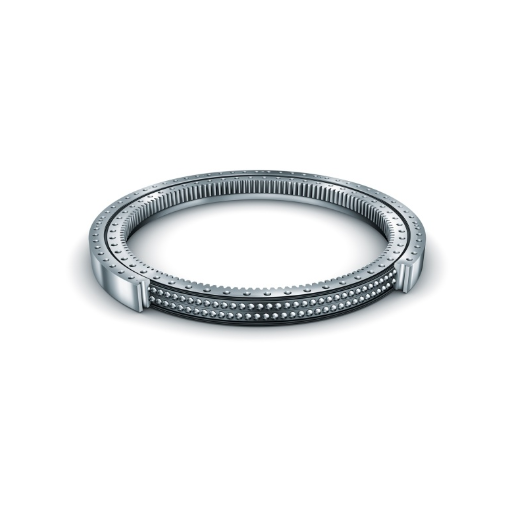
Factors to Consider: Load, Diameter, and Rotation
The factors which determine the selection of gear and slewing bearings, which include load, diameter, and rotation, are fundamental determineers in regard to the system’s efficiancy and system durability.
- Load Requirements: The bearing or gear’s load capacity has to meet the application’s operational requirement. This includes static loads, which are applicable when a system is not moving, as well as dynamic loads, which are relevant when a system is operational. External forces such as radial, axial, or tilting moments must also be considered for accurate wear calculations.
- Diameter Suitability: The skeleton of the machine requires the bearing’s outer and inner rings to be matched with its frame. Lower diameters are better for compact systems, while larger diameters are crucial for robust systems subjected to heavy loads. Large slewing rings and robust clamps used in construction cranes are good examples from specialized fields that easily withstand tough workloads. Measurable adeptness turning in fit and form guarantees performance without hiccups during tasks.
- Rotation and Speed: The system’s speed and rotational requirements directly impact bearing selection. The bearings in high–speed operations withstand additional friction and thermal buildup; thus, enhanced lubrication methods and heat dissipation systems are required.
Meeting all of these considerations through thorough analysis alongside compliance with relevant regulations guarantees that the gear and slewing bearings have functional adequacy while minimizing chances for mechanical failure. Optimal selection improves efficiency and equipment lifespan.
Understanding External Gear vs. Internal Gear Options
The configuration of gears is mainly done in two ways: external and internal, both of which have benefits suited to specific uses. Because the spaces are compact, external gears that have their teeth cut on the outer surface of a gear are externally employed in gear trains and any other device that requires a series of other gears to mesh. The external design of the teeth makes manufacturing much simpler and also leads to a greater efficiency in torque transmission.
For planetary system applications requiring reduced backlash, having teeth on the inside diameter of a hollow gear body is a favorable design, which makes these gears internal. Internal gears are often used with pinion gears to form compact and smooth systems in industrial machinery and automotive differential systems, differentiation. The internal gears offer the advantage of a fully protected gear mechanism, which makes the setup less vulnerable to contamination in harsh environments.
It is critical to regard the load demands, geometrical details, as well as the ratios of reduction and operation environment when distinguishing between external and internal gearing systems. With the help of these tools, along with adherence to industry standards, engineers are able to guarantee optimum performance of the system, as well as its sustained reliability and durability over time.
Maintenance Tips for Extending the Lifespan of Slewing Ring Bearings
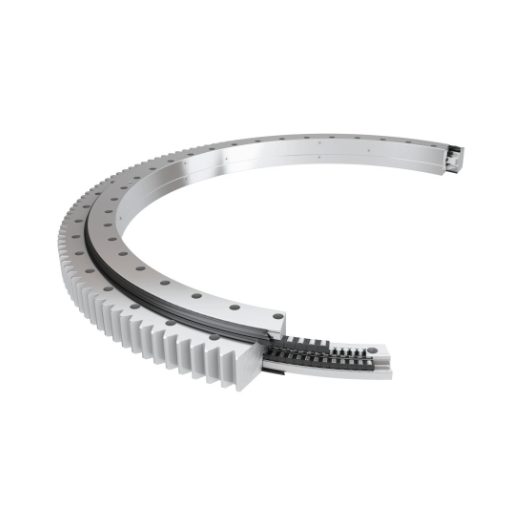
Routine Check-Ups for Durability and Performance
Slewing ring bearings require regular inspection and maintenance to preserve their continued dependability and life span. A more systematic strategy includes checking bearing lubrication levels at set intervals, as lack of lubricant leads to an increase in friction, wear, and eventual failure of the bearing system. Equally important is the examination of the gear teeth for their adequate condition, checking for their wear, pitting, and deformation. Such irregularities compromise the load distribution alongside the mechanical performance.
Moreover, engineers must evaluate the condition of the mounting bolts, paying attention to the proper degree of tension and signs of loosening due to operational vibration fatigue. Constructive assembly balance is ensured by checking regular torque values. Measuring axial and radial runout tolerances aids in detecting other potential misalignment issues that cause stress on the components as well.
Collectively analyzing factors like vibration or temperature offers vital information with regards to bearing condition and presents opportunity for early diagnosis of damage. When combining practical checks and digital monitoring systems, maintenance schedules become precise, thus reducing chances of facing unplanned interruptions.
Ensuring Cost-Effective and Maintenance-Free Operations
It is vital to implement a maintenance strategy with greater forecast cost efficacy sensitivity, and operational maintenance sensitivity to achieve both cost-free maintenance of operations and automation. This approach exploits predictive maintenance technologies featuring sensors and equipment, and real-time data collection systems. Analyzing critical factors such as vibration, thermal drift, and lubricant oil degradation allows these systems to observe damage and wear inadequacies early and helps operators avert costly failures.
These goals can also be achieved with proper resource allocation. Automation of work processes decreases the need for manual work and subsequently human errors explained by the Systems Hierarchy theory. Also, appropriate material selection, for example on bearings and seals, guarantees strength and durability under extreme working conditions. The use of application-specific, high precision components results in greater operational efficiency, lower replacement and associated downtime frequency.
Moreover, utilizing analytics improves asset management. Advanced algorithms fused with historical maintenance data have the through put to identify future performance trends and associate them to actionable steps. This manner enables creation of a customized maintenance approach that mitigates superfluous inspections and repairs, thereby minimizing costs while maximizing the life span of critical components of the machinery.
The adoption of modern technologies, accurate materials, and an approach based on data analytics has developed an operational system that achieves both cost efficiency and continuous performance, strengthening reliability in industrial systems.
Frequently Asked Questions (FAQs)
Q: What is a slew ring bearing, and how does it function?
A: A slew ring bearing, also known as a turntable bearing, is a type of rotational rolling-element bearing that typically supports a heavy but slow-turning or slow-oscillating load. They are designed to handle axial, radial, and moment loads simultaneously, which makes them essential in a variety of applications such as cranes, excavators, and machine tools.
Q: What are the key components of a slew ring bearing?
A: The key components of a slew ring bearing include the inner and outer rings, rolling elements (such as balls or rollers), spacers, and sometimes gear teeth. These components work together to facilitate smooth rotational movement and precise positioning.
Q: What are the advantages of an eight-point contact design in slew ring bearings?
A: An eight-point contact design in slew ring bearings offers enhanced load distribution and increased stability, making it suitable for applications requiring maximum load capacity and precise positioning. This design helps in achieving optimal economy and capacity for challenging tasks.
Q: How does the ball diameter affect the performance of a slew ring bearing?
A: The ball diameter in a slew ring bearing affects its load capacity and rotational resistance. Larger ball diameters can support higher loads and offer robust construction, but they may also increase the bearing’s overall size and weight. Selecting the right ball diameter is crucial for balancing performance and service life.
Q: What materials are commonly used in the construction of slew ring bearings?
A: Slew ring bearings are typically constructed from materials like anodized aluminum and hardened steel, chosen for their strength and durability. The choice of material can impact the bearing’s corrosion resistance, hardness, and overall performance in different environments.
Q: What is the role of self-lubricating polymer in slew ring bearings?
A: Self-lubricating polymers in slew ring bearings reduce friction and wear, enhancing the bearing’s service life and reliability. These polymers are particularly beneficial in applications where traditional ball bearing designs may struggle with lubrication challenges.
Q: How do slew ring bearings accommodate a range of applications?
A: Slew ring bearings are designed to accommodate a variety of applications due to their versatile construction, which allows them to handle different types of loads. Their adaptability makes them suitable for use in industries ranging from construction and mining to aerospace and automation.
Q: What factors contribute to the precise positioning capabilities of slew ring bearings?
A: Precise positioning in slew ring bearings is achieved through their robust construction, accurate machining of the bearing races, and the use of high-quality rolling elements. The design ensures minimal play and optimal engagement between components, providing accurate and reliable motion control in machine tools and other precision equipment.
UCTH213-40J-300 with Setscrew(inch)
CNSORDERNO: Normal-duty(2)
TOGN: UCTH213-40J-300
SDI: B-R1/8
SD: 2 1/2
UCTH212-39J-300 with Setscrew(inch)
CNSORDERNO: Normal-duty(2)
TOGN: UCTH212-39J-300
SDI: B-R1/8
SD: 2 7/16
UCTH212-38J-300 with Setscrew(inch)
CNSORDERNO: Normal-duty(2)
TOGN: UCTH212-38J-300
SDI: B-R1/8
SD: 2 3/8
UCTH212-36J-300 with Setscrew(inch)
CNSORDERNO: Normal-duty(2)
TOGN: UCTH212-36J-300
SDI: B-R1/8
SD: 2 1/4
UCTH211-35J-300 with Setscrew(inch)
CNSORDERNO: Normal-duty(2)
TOGN: UCTH211-35J-300
SDI: B-R1/8
SD: 2 3/16
UCTH211-34J-300 with Setscrew(inch)
CNSORDERNO: Normal-duty(2)
TOGN: UCTH211-34J-300
SDI: B-R1/8
SD: 2 1/8










